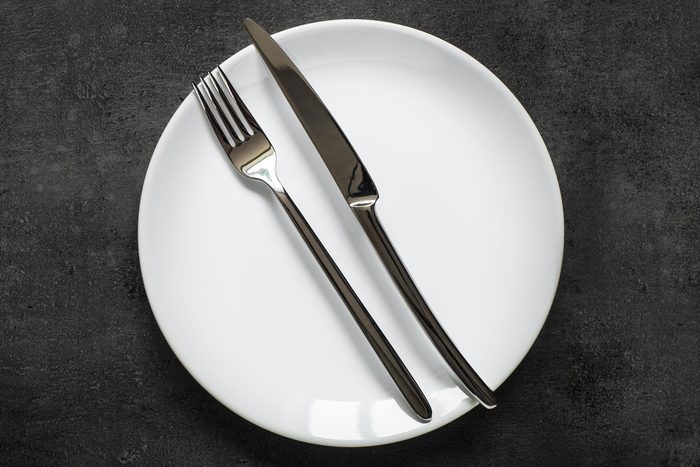
Don’t believe the hype
Food marketers are smart: Time and time again, they manage to convince us that the foods we’re better off avoiding are the very things that will help us stay trim and healthy. It’s no wonder that diets don’t work; there’s a ton of misinformation floating around.
To avoid falling victim to these marketing traps, you must stay informed. We spoke with nutritionists to find out which so-called “healthy” foods they avoid and learn what they eat instead. Following their lead may just be your ticket to eating a diet that makes you feel—and look—your very best.
(Here’s your handy guide to decoding food labels.)
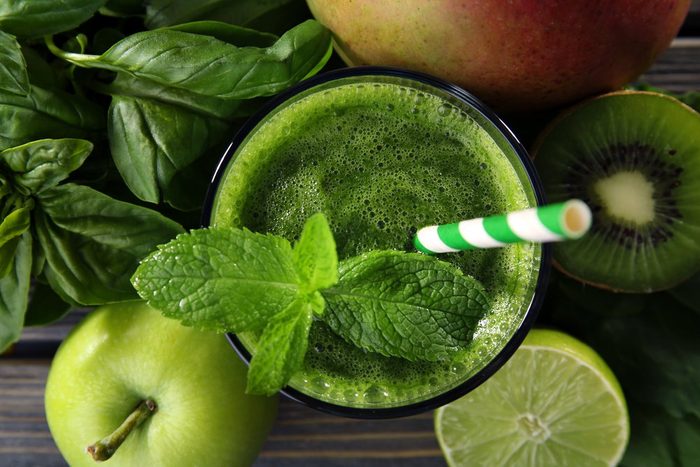
Green juice and smoothies
Sure, they’re served at basically every health food shop, and are often considered ideal weight loss allies, but some dietitians aren’t fans of smoothies or juices. “I only recommend them if I have a client who needs to gain weight,” says Ilyse Schapiro, RDN.
“Chewing your food tells your body that it’s eating and consuming calories and gets it ready for digestion. When you sip your calories, this doesn’t happen,” Schapiro explains. In turn, you won’t retain as many nutrients, including fibre, so you might need additional calories to feel full and satisfied.
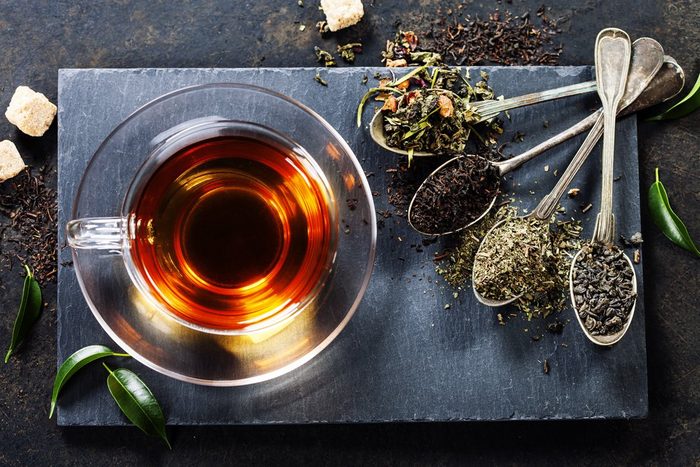
Drink tea and seltzer, instead
Stick to water, seltzer, or unsweetened teas as your primary beverages, Schapiro recommends. When you’re craving fruits and veggies, enjoy them whole and fresh instead of sipped through a straw.
(Related: 9 Things That Happen to Your Body When You Get a Full 8 Glasses of Water)
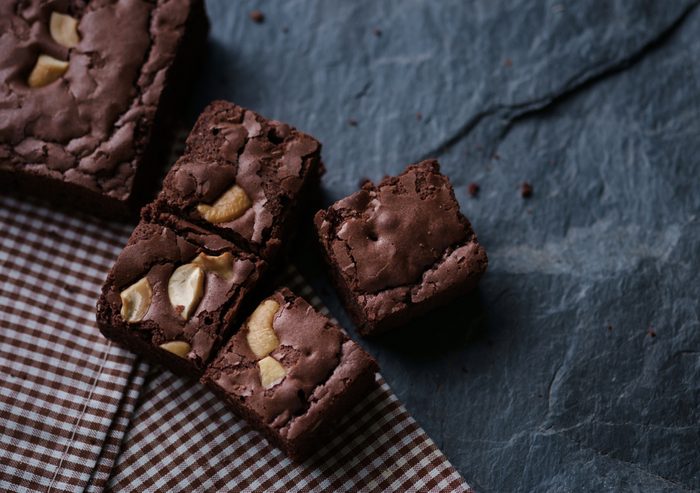
Reduced-calorie and sugar-free sweets
If you’re trying to eat a more wholesome diet, you might see low-carb brownies or sugar-free candies as smart substitutions for your favourite desserts. But diet pros say these treats are better off left on the shelf than in our stomachs.
Often these treats contain questionable sugar substitutes, and excess fat and salt to make up for the lack of sugar and calories, explains Angel Planells, RDN, CD, a spokesperson for the Academy of Nutrition & Dietetics. “Plus, when you’re eating ‘diet’ desserts, people are tempted to eat more than they typically would,” Planells adds.
(Make sure to try our Wild Blueberry Sorbet.)
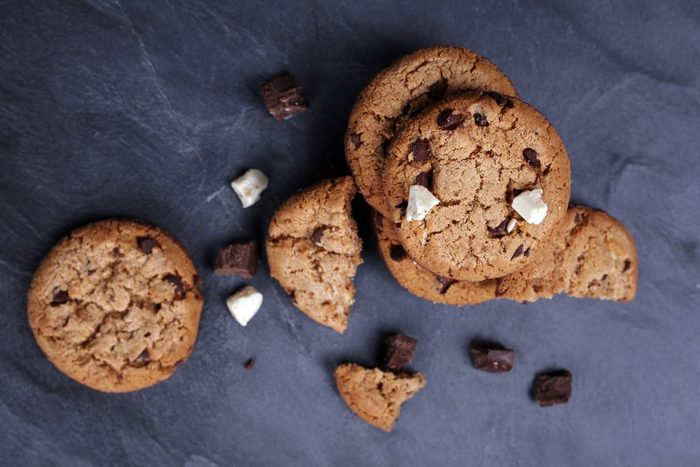
Try less of the real thing
Have a small portion of whatever it is that you’re craving. “Eat a small piece of a real cookie or brownie, and take the time to really savour the flavour,” recommends Sarah Koszyk, RDN, the author of 365 Snacks for Every Day of the Year.
(If you know you won’t be able to stick to small serving sizes, consider quelling your sweet tooth with some fruit, nature’s tastiest candy.)
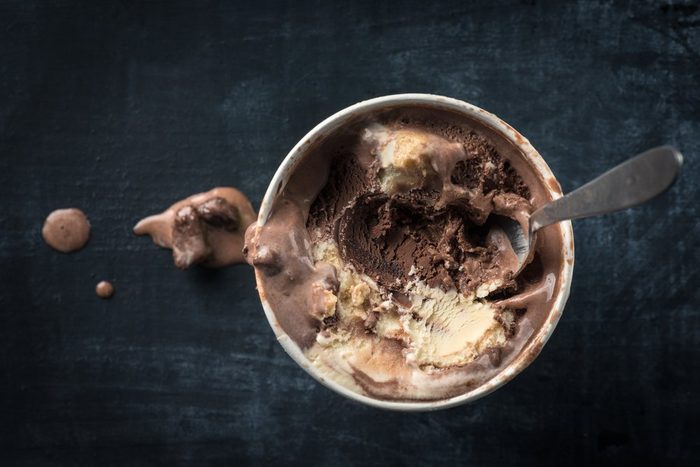
Eat-the-whole-pint
We’ve all seen those containers of ice cream advertising that the entire pint has just 300 calories. (Halo Top and Arctic Zero are two popular such brands.) While these might seem like a smart choice, Amy Shapiro, RD isn’t a fan. “I hate the marketing here. It teaches people that portion control doesn’t matter, and I truly believe if we all stuck to proper portions, no one would be struggling with weight.”
Shapiro doesn’t like the sugar alcohols used to create these products either. “Although they’re all natural, they can cause a lot of stomach discomfort, gas, bloating, and even diarrhea when consumed in large amounts.”
(Related: This Nutrition Expert Is Encouraging You to Eat the Cookie)
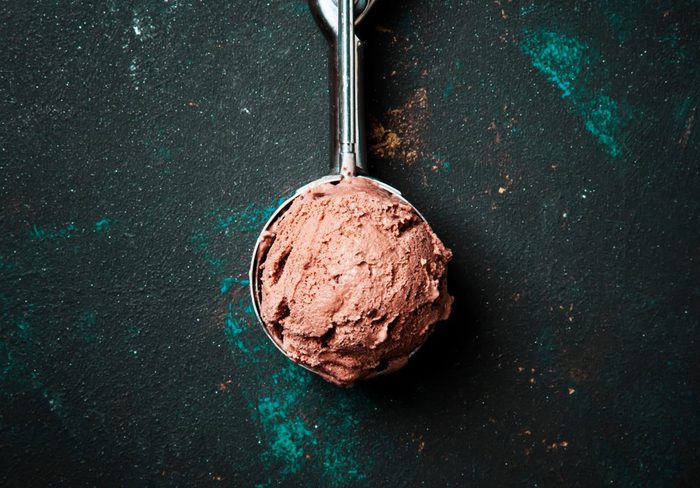
Eat the real thing
When you want something cold and sweet, skip the fake stuff and enjoy a half-cup serving of real ice cream, topped with fresh fruit and nuts, suggests California-based dietitian Yasi Ansari, RDN.
(Or try some of these other healthy toppings.)
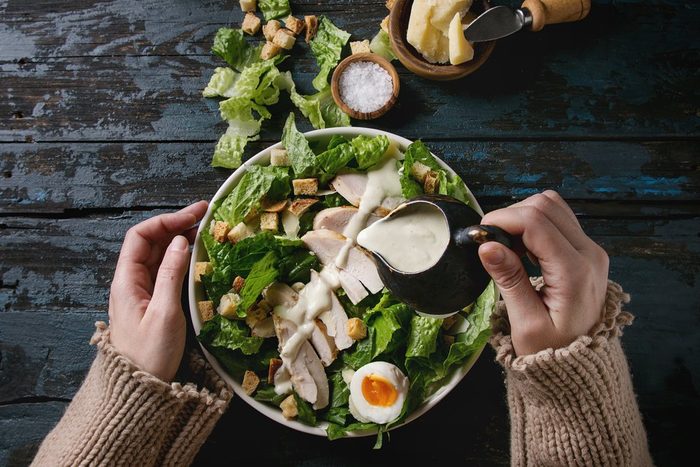
Fat-free salad dressing
We need fat to absorb many of the nutrients in vegetables, so you’re actually doing your body a disservice by using fat-free dressings, Planells explains. What’s more, when brands reduce their product’s fat content, they’ll often add artificial sweeteners or sugar to keep their dressing tasty, explains Isabel Smith RD, CDN.
(Related: 3 Healthy Salad Dressing Recipes This Nutritionist Swears By)
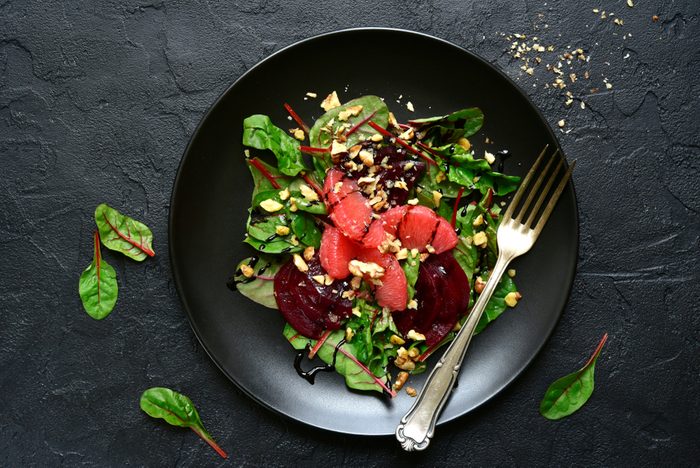
Oil and vinegar always works
Use a small serving of regular salad dressing, Smith and Planells suggest. Or go for a tablespoon of olive oil and a tablespoon of vinegar, Planells adds.
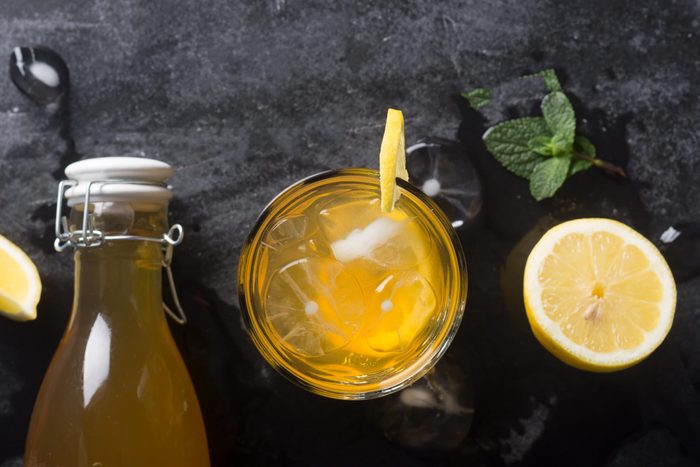
Kombucha
You might have heard that this fizzy fermented tea can improve everything from digestion and metabolism to immunity and heart health. While the drink does contain vitamins, antioxidants, and gut-friendly probiotics, there haven’t been enough studies to confirm that this drink actually delivers any real health benefits.
What we do know, though, is that a lot of the bottled kombucha for sale in stores is high in calories or sugar, Schapiro says. “Also, consuming too much of it can lead to digestive distress. It’s carbonated which can cause gas and bloating.”
(But if you’re looking to DIY your own Kombucha, check out our five-ingredient recipe.)
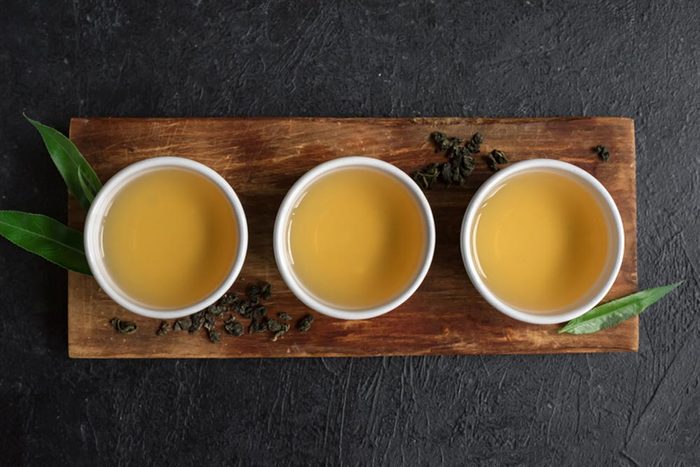
Drink regular tea
“I recommend regular tea. It has known antioxidant properties, and there is way more research out there on the benefits of tea than kombucha,” Schapiro says.
(Related: Why You May Want to Start Drinking Red Raspberry Leaf Tea This Year)
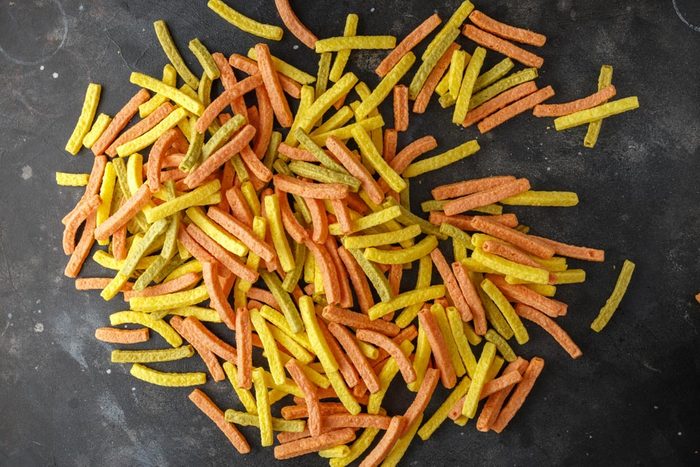
Veggie chips and “straws”
Veggie sticks and straws might seem like a diet-friendly alternative to potato chips, but Patricia Bannan, RDN, the author of Eat Right When Time Is Tight suggests steering clear. “The first ingredients are usually ‘potato starch’ and ‘potato flour’ which offer little in the way of nutrition and provides zero dietary fibre,” she explains.
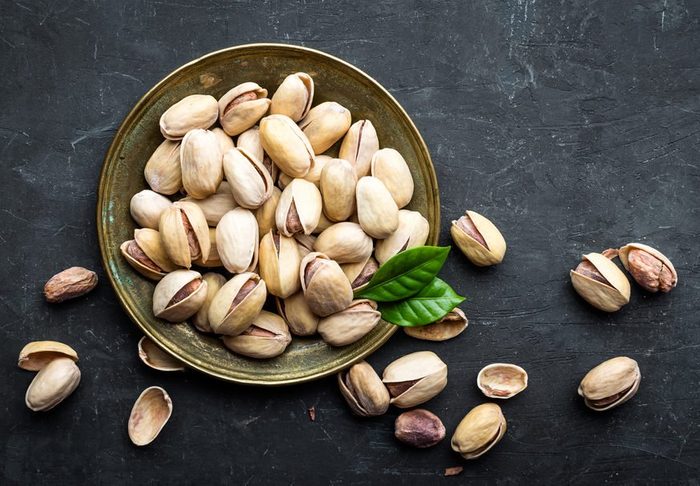
Get nutty, instead
“While these baked sticks and straws are lower in fat compared to fried potato chips, a better option for snack time crunching would be nuts,” Bannan says. “A one-ounce serving of pistachios, for example, offers protein, dietary fibre, and healthy fats which will help keep you full.”
If you definitely want to stick to veggie chips, make sure the first ingredient is actually a whole vegetable, like sweet potato, beets, or kale, Bannan says.
(Related: Are Pistachios Good for You? Their Nutrition, Calories, and Health Benefits)
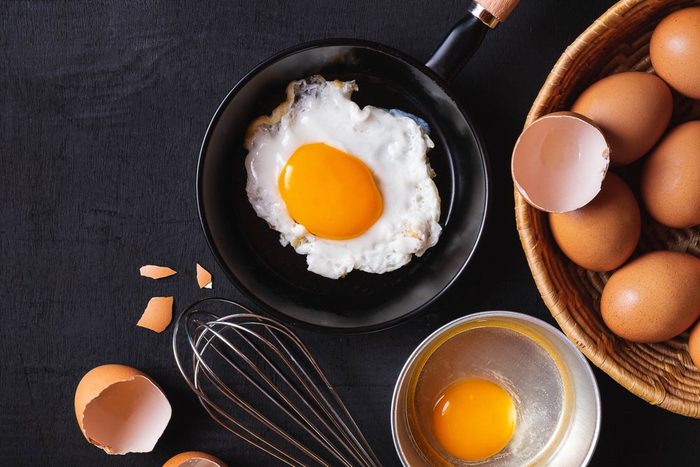
Egg whites and egg beaters
“The latest research has shown that there is no need to skip egg yolks. In fact, I encourage my clients to eat them due to the abundance of nutrients found in the yolk such as iron, selenium, folate, choline, and vitamin B12,” says Lori Zanini, RD, CDE, the creator of For The Love of Diabetes online program.
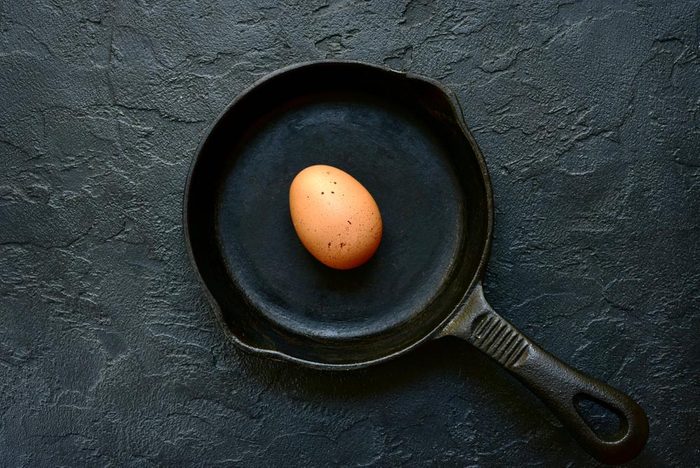
Have an egg already
“Studies have found that eating high-quality proteins, like whole eggs, can promote weight loss,” Zannini says. Short on time? She recommends buying eggs that come hard-boiled and peeled from the store. All the better if you can find some that are organic, free-range, and free of antibiotics.
(For an almost-instant morning breakfast, make our Toasted Western Sheet Pan Eggs.)
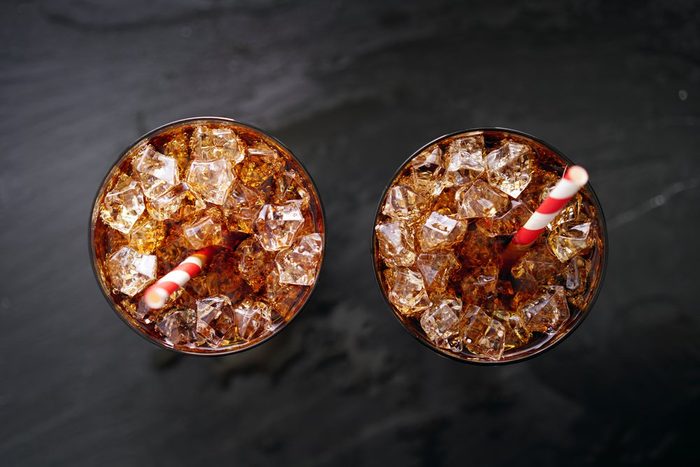
Diet soda
You may already know that diet soda contains artificial sweeteners, flavours, and colouring. But here’s something you may not have known: Consuming two or more artificially sweetened beverages per day have been linked to an increased stroke risk among postmenopausal women, Ansari says. “There is also some evidence to support a link between long-term diet beverage consumption and an increased risk of chronic diseases such as dementia, type 2 diabetes, and obesity.”
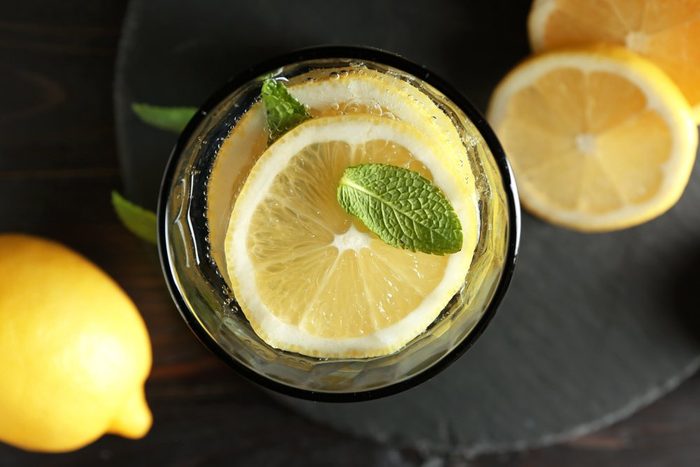
Juice-infused water
Even though an occasional diet soda appears to be safe, I encourage my clients to stick to plain water, fruit-infused water, or unsweetened iced tea or iced coffee,” says Ansari. Another smart option: A splash of juice mixed with seltzer water. “Replacing diet soda with seltzer mixed with a no-sugar-added juice option such as Welch’s 100% Grape Juice serves up a bit of flavour, as well as vitamin C and antioxidants,” says Jim White, RDN.
(Related: 23 Flavoured Water Recipes That Are Beyond Refreshing)
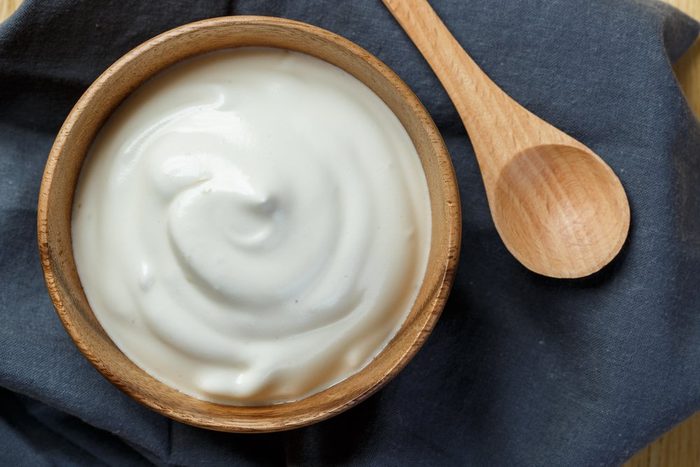
Low-fat and low-calorie yogurts
All yogurts are not created equal, cautions Rebecca Ditkoff, RD, CDN. “Some are a great source of protein, calcium, and probiotics with minimal added sugars, which make a great addition to any meal or snack. However, sweetened yogurts—some of which have up to 20 grams of sugar—are more or less a dessert.”
Kara Lydon, RD, LDN agrees with Ditkoff’s sentiments and adds that it’s important to be wary of low-fat, or “light” yogurts, too. “They’re missing the satiating component of dietary fat, and they are usually less than 100 calories per serving which is not substantial enough for a snack,” she explains.
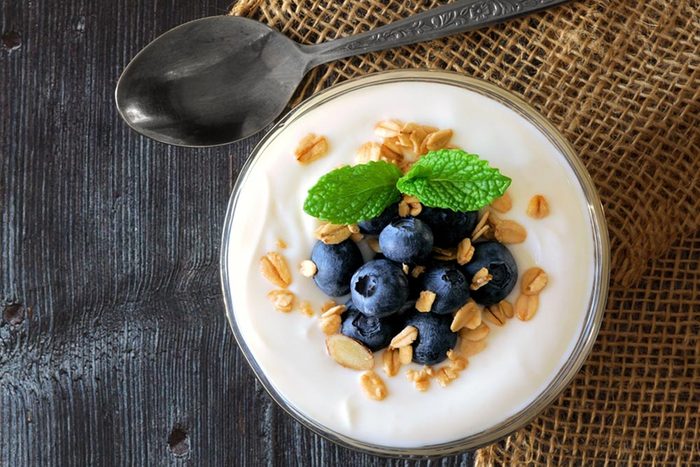
Choose full fat
Choose full-fat, Greek or Icelandic unsweetened yogurts. Not only will these options actually keep you satisfied and satiated, but they also they tend to contain two times the protein and half the sugar of regular yogurt, Lydon and Ditkoff explain. Top with fresh fruit for added flavour.
(Related: If You Don’t Eat Yogurt Every Day, This Might Convince You to Start)
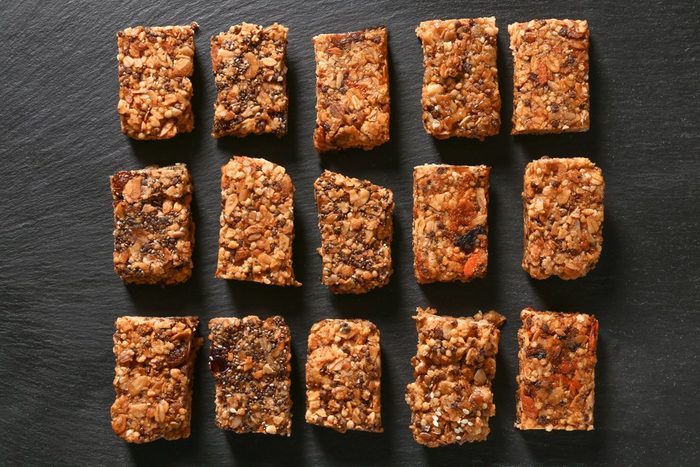
Meal replacement bars
Whether you’re short on time or trying to lose weight, a meal replacement bar might seem like a good solution, but Zanini says you’re better off grabbing something else. “Many of these bars contain artificial ingredients and lack real food ingredients that will likely leave you craving more sweets,” she cautions. “They also tend to be poorly balanced. Without fibre, protein, and fat, foods will digest quicker and likely lead to overeating later on.”
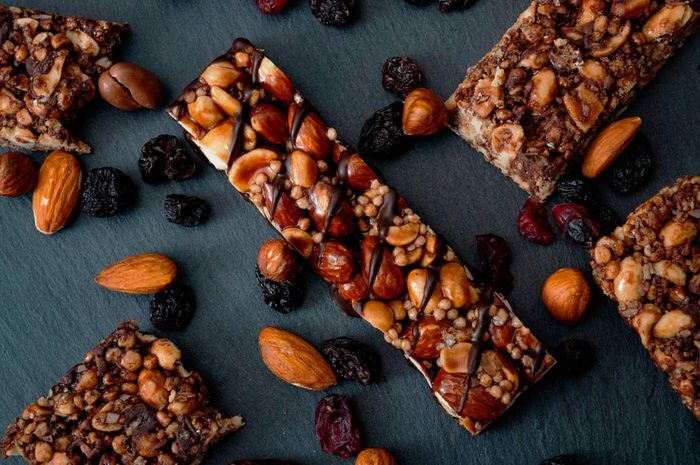
There is one good bar
When it comes to meals, whole foods are best. If you tend to be time-strapped, or just want to eat a bit healthier, consider prepping one of these make-ahead meals. And if you’re looking for a bar option to enjoy as a snack, Zanini recommends KIND Protein Bars. Not only are they free of artificial ingredients, but they also contain 12 grams of protein and five grams of filling fibre to help keep you full.
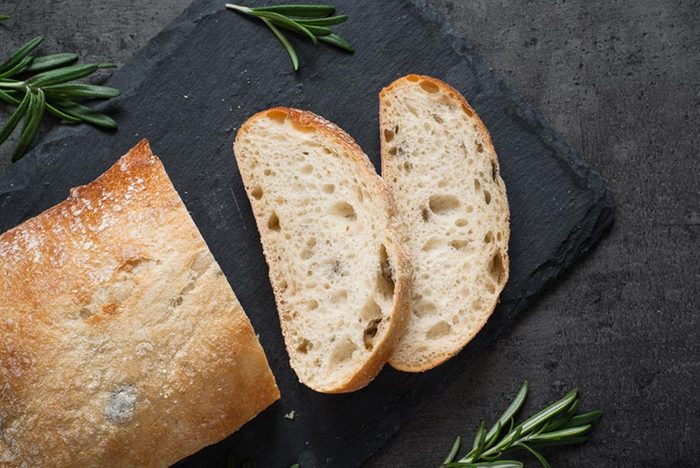
Reduced-calorie bread
Reduced-bread might seem like an easy way to keep some calories off your lunch plate. But more often than not, these products have little or no fibre, fat, or protein. That can be a problem since these nutrients help keep you feeling full and add flavour and taste to your foods, explains Torey Armul, RD spokesperson for the Academy. In other words, you’re better off buying something else for your sandwiches and toast.
(Related: Is Chickpea Bread Healthy? The Nutrition Facts About This Grain-Free Bread)
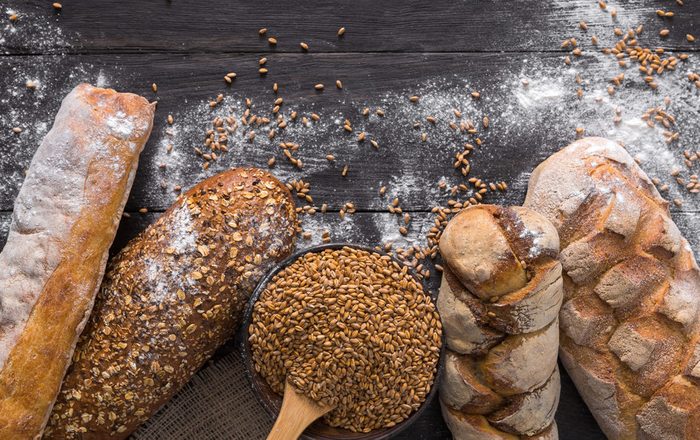
Go 100 percent whole grain
Instead of focusing on calories, look for products made with 100 percent whole grains that contain at least two grams of fibre and three grams of protein per slice, Armul says. “In the end, you’re better off eating something that’s packed with nutrients, even if it is higher in calories than filling your body with empty calories. Just be mindful of your portions and stick to no more than two slices per meal.”
Next: Find out more food rules nutritionists live by.
